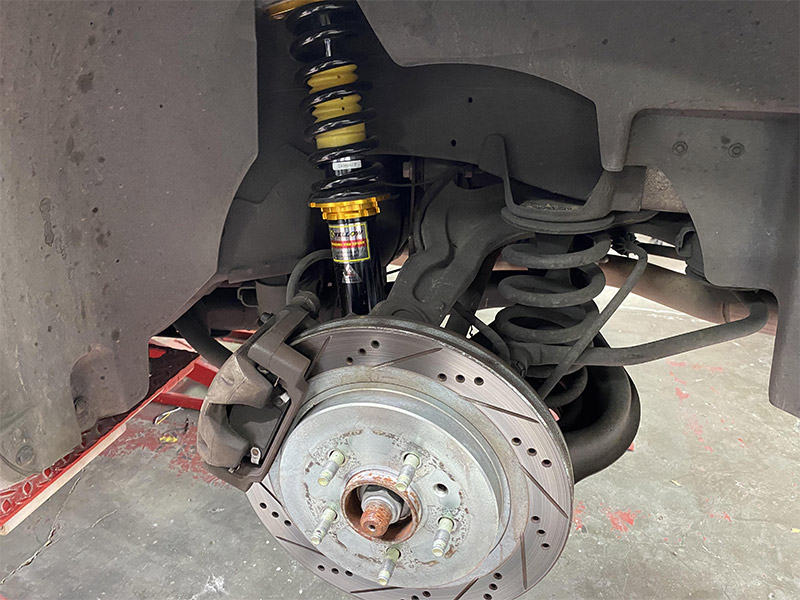Your vehicle's suspension system is one of the most critical yet often overlooked components of automotive maintenance. Shock absorbers and springs wo
Your vehicle’s suspension system is one of the most critical yet often overlooked components of automotive maintenance. Shock absorbers and springs work together to ensure a smooth, safe ride while protecting your vehicle’s frame and components from road imperfections. Understanding how to maintain these parts can save you money, improve safety, and extend your vehicle’s lifespan.
Understanding the Basics
Shock absorbers (or dampers) control the movement of your vehicle’s springs and suspension. They dampen the oscillations that occur when your car encounters bumps, preventing the vehicle from bouncing excessively. Springs support the vehicle’s weight and absorb initial impacts from road irregularities.
Together, these components form the foundation of your ride comfort and handling characteristics.
Signs Your Suspension Needs Attention
Recognizing problems early can prevent more costly repairs down the road. Watch for these warning signs:
Excessive bouncing is one of the clearest indicators of worn shock absorbers. If your car continues to bounce more than twice after going over a bump, your shocks are likely failing. Similarly, if you notice your vehicle nosediving during braking or squatting during acceleration, the suspension system isn’t doing its job properly.
Uneven tire wear often points to suspension issues. When shocks and springs wear out, they can’t maintain proper tire contact with the road, leading to cupping or scalloping patterns on your tires. This not only compromises safety but also means you’ll need to replace tires more frequently.
Fluid leaks around the shock absorbers indicate seal failure. Most shocks are hydraulic and contain fluid that should never leak. If you see oily residue on the shock body, replacement is necessary.
Handling problems like excessive body roll during turns, steering difficulties, or a feeling that the vehicle is floating or wandering suggest suspension deterioration. These symptoms directly impact safety and should be addressed immediately.
Maintenance Schedule and Best Practices
Inspection frequency should occur every 12,000 miles or at least once a year. During routine maintenance, ask your mechanic to inspect the suspension components for wear, damage, and leaks. Many problems can be caught early through visual inspection.
Shock absorber lifespan typically ranges from 50,000 to 100,000 miles, depending on driving conditions and quality. However, deterioration happens gradually, so you might not notice the decline in performance. If your shocks are approaching 50,000 miles, have them tested even if you haven’t noticed obvious symptoms.
Spring inspection should focus on sagging, cracks, or corrosion. While springs generally last longer than shock absorbers, they can weaken over time, especially if you frequently carry heavy loads or drive on rough roads. Broken or severely corroded springs require immediate replacement as they can fail catastrophically.
Practical Maintenance Tips
Keep your suspension system healthy with these straightforward practices:
Avoid overloading your vehicle beyond its rated capacity. Excessive weight strains springs and accelerates wear on shock absorbers. Check your vehicle’s load rating in the owner’s manual and respect these limits.
Drive carefully over speed bumps, potholes, and rough terrain. While your suspension is designed to handle these obstacles, aggressive driving over rough surfaces accelerates component wear. Slow down when you can’t avoid road imperfections.
Maintain proper alignment by getting your wheels aligned according to the manufacturer’s schedule or whenever you notice pulling or uneven tire wear. Misalignment forces suspension components to work harder and wear faster.
Check mounting hardware periodically. The bolts and bushings that connect suspension components can loosen or deteriorate. During routine maintenance, ensure all fasteners are tight and bushings aren’t cracked or excessively worn.
Consider your environment when planning maintenance. If you live in areas with harsh winters, road salt can accelerate corrosion of suspension components. More frequent inspections and protective treatments may be worthwhile in these conditions.
When to Replace Components
Replace shock absorbers in pairs on the same axle, even if only one appears worn. This ensures balanced handling and prevents uneven wear on other components. Many mechanics recommend replacing all four shocks simultaneously for optimal performance, though this isn’t always necessary if the rear shocks remain in good condition.
Spring replacement follows the same principle. Replace springs in pairs to maintain proper ride height and handling balance. If one spring has failed or sagged significantly, its partner has likely experienced similar stress and will fail soon.
Upgrade opportunities exist when replacing worn components. If you’re dissatisfied with your vehicle’s handling or ride quality, replacement time offers a chance to upgrade to performance or comfort-oriented aftermarket options. However, ensure any upgrades are appropriate for your vehicle and driving needs.
The Bottom Line
Regular suspension maintenance isn’t glamorous, but it’s essential for safety, comfort, and long-term vehicle health. A well-maintained suspension system improves handling, reduces wear on other components, and makes every drive more enjoyable.
Pay attention to how your vehicle rides and handles. Address small problems before they become big ones. And remember that suspension components have finite lifespans—even if nothing seems wrong, age and mileage take their toll. When in doubt, have a qualified mechanic inspect your suspension system. The investment in proper maintenance pays dividends in safety, comfort, and overall vehicle longevity.


COMMENTS